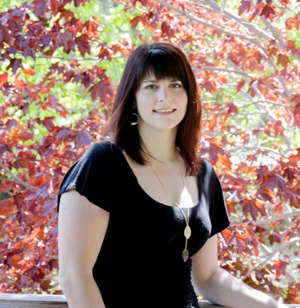
Profile: Ellen Redlick
Analyzing & Exploring the Soil
Ellen Redlick, Masters Student in Computer Science (Project 3.3)
P2IRC Research: Analytic Pipeline for Soil Microbe Exploration
Can you tell me a bit about yourself?
I received my undergraduate degree here at the University of Saskatchewan in Computer Science. Then I worked in industry for six years and came back afterwards to do my masters. I was looking to get more into data analytics instead of software development and coding. I grew up with a farming background, so its appealing to see this is an agricultural project.
Can you provide a brief summary of your research?
I’m working on the computer science side with soil scientists and agronomists. They give us soil samples, which contain tens of thousands of organisms within them. Many organisms in the soil samples are low in abundance and scientists don’t know what these organisms do or what their function is. We use abundance tables from soil samples to determine which of these organisms is important to the function of the soil and the community. We don’t know what these organisms are or what their functions are, we simply number them and pick out which ones are important from a computer science standpoint. Once we analyze these samples, we work with the soil scientists to interpret whether these results make sense. Our research helps soil scientists to be able to optimize the crops they’re growing.
Why is your project important?
Right now soil scientists don’t have a lot of different approaches to analyze soil samples in an efficient and effective way. Usually, they’re constrained and only have a few soil samples from each site. This is hard or impossible to work with using traditional statistics, as this isn’t a large enough sample size. So, we are working on a new way to look at this problem and aid the field of soil science. However, our research is applicable to any situation or field where traditional statistics fails – research that involves a small sample size and a lot of variables.
What was one of the biggest challenges you’ve faced as a researcher and how did you overcome it?
I came from industry, and grad school involves a very different way of looking at things. I’m used to solving problems, but research is this open-ended world, where you look around and come up with novel ideas to do something. I’m not used to thinking that way, so I’m learning that it’s okay if something doesn’t work or we don’t come up with an immediate solution.
What is one of the most interesting findings that you’ve had to date?
Results usually come with varying abundance. However, it’s nice to see that our results aren’t coming straight from how much abundance there are of certain organisms – we have some rare ones showing up. We’re learning how low abundance organisms can play a role in the soil community. Our results are showing that these rare organisms can be important, even if there are only a few of them.
What do you like to do when you aren’t working on research?
I like playing sports in general. I curl competitively and in the summer I like to golf.

